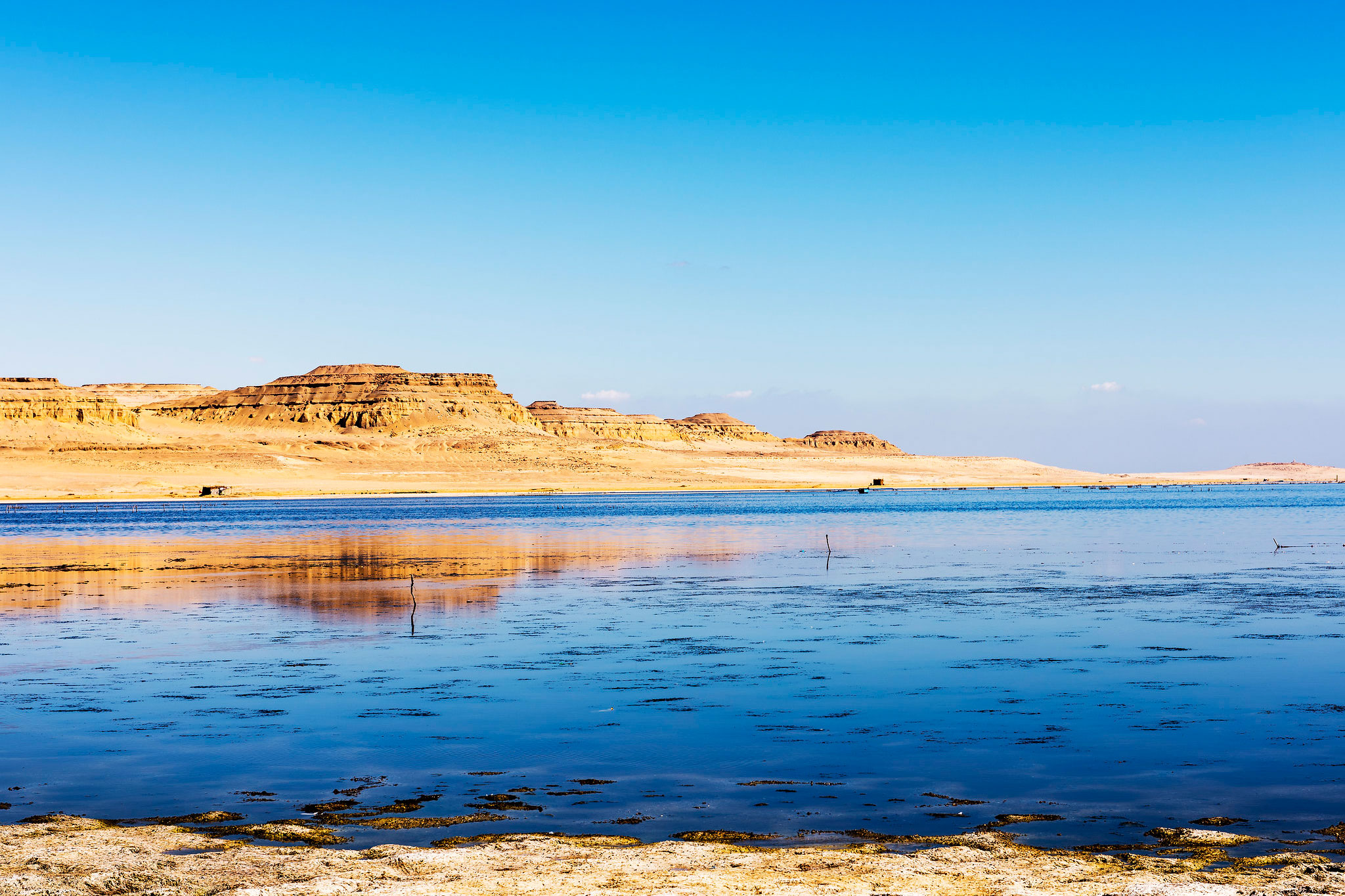
Faiyum Oasis
Faiyum oasis is like a fairyland that comes to a life filled with majestic deserts, green massive lands, magical lakes & waterfalls rich with so much history and culture. The mythical beauty of this celestial place will make everyone enter a dream state filled with infinite wonders that feels like the heavens and stars on earth. Within this golden land are a number of incredible tales of glory and wonder showcasing the imagination and blessed nature of the Egyptians across the ages.
This astral land has inspired many people across the world such as the famous writer Paolo Coelho who created "The Alchemist" where the oasis was the setting for a quarter of the entire novel. These giant natural treasures will provide the ultimate sensations of bliss, serenity, and amazement plus offer a clear path leading to the great works of art ever created in existence.

Location & How to Get to the Faiyum Oasis
The Faiyum oasis is a celestial basin found in the western desert just 62 miles (85 km) south of Cairo, 75 km from Giza Pyramids, west of the Nile River, and 105 km from Cairo Airport. The depression area is between 1,270 km2 (490 mi2) and 1,700 km2 (656 mi2).
This dip floor holds fields that are flooded with water by the magical Nile River channel known as the Bahr Yussef then it drains the flood waters into a desert hollow "Faiyum oasis" to the western end of the Nile River Valley.

The Oasis of Faiyum Weather
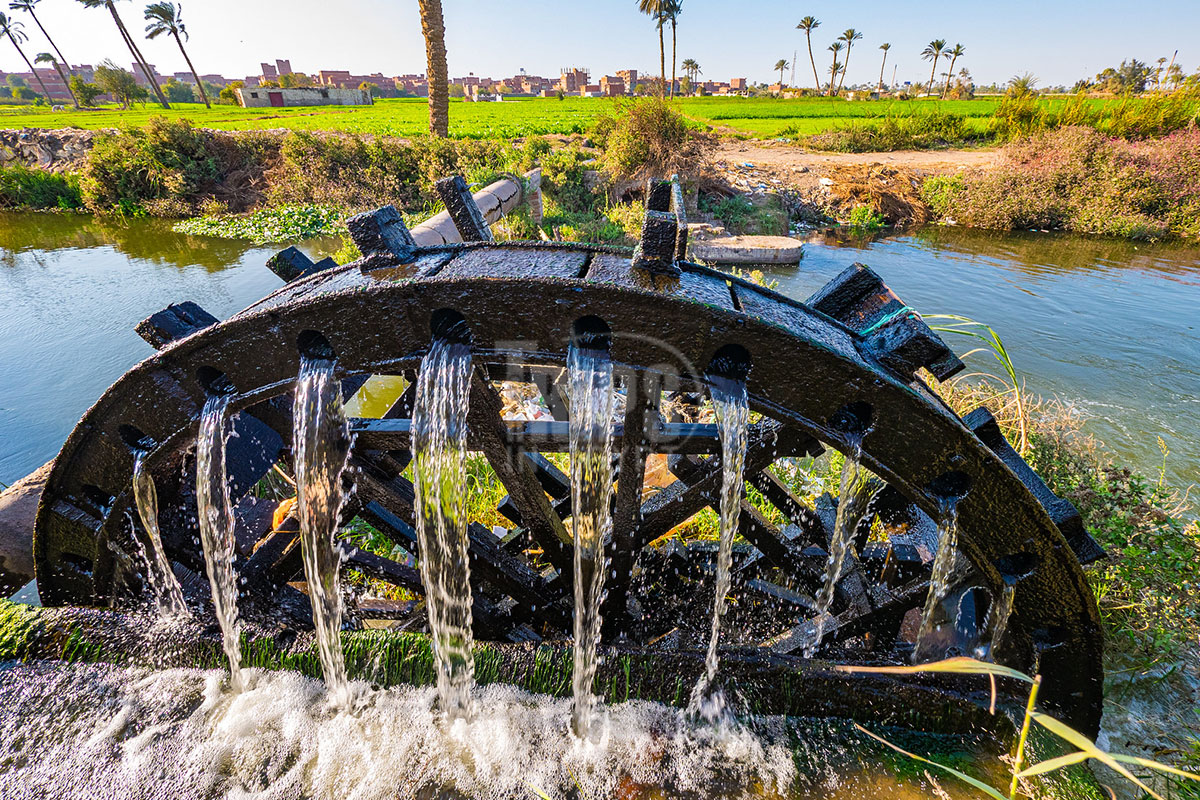
Fayoum has a magical mild climate from October to April with an average temperature of 24-25 °C and summer temperatures over 40°C. There are over 200 water wells and the seven water wheels are known to be a massive attraction in the nearby Wadi Rayyan which is an artificially created expanse of water.
In the modern period from 1903 to 1910 AD many projects of farming cereals and cotton were established. The oasis is filled with cultivated lands of figs, grapes, olives, and Rose trees, and a massive breed of sheep.

History of Faiyum Oasis

The formation of the Faiyum oasis came in the Miocene era more than 6 million years old when the Nile canyon became an essential arm of the Mediterranean sea leading to Aswan then with time this arm was loaded with silt thus transforming into the Nile Valley which water level overflow into the hollow day land of Faiyum which with time became rich with wildlife.
This huge Lake was recorded for the first time about 3000 BC during the reign of Menes which was loaded from time to time with high flood waters. It was bordered by a number of neolithic settlements and the Crocodilopolis town grew in the southern region where the higher land established a ridge. The kings of the 12th dynasty of an ancient Egyptian pharaoh are known to use the Faiyum lake as a reservoir to store a plethora of flood waters in the dry periods.
The ancient Egyptians know Faiyum as Atef-Pehu "Northern Sycamore" during the 21st nome of ancient Upper Egypt, its own capital was known as "Shedyt". The Greeks called the Faiyum “Crocodilopolis” and rebuilt it by rulers Ptolemy II under the name Arsinoe. This area is known to have the first ever evidence of farming in the history of Egypt and a center for tomb building and a royal pyramid in the 12th dynasty of the Middle Kingdom (2055 BC–1650 BC) and during the Roman period (205 BC – 30 BC).
Faiyum was famous for being the first-ever and most important breadbaskets of the entire Roman world. The people of Faiyum during the first three centuries AD mummified their dead and covered their faces with a wooden portrait. The dry desert environment of the Faiyum oasis helped preserve the mummy. The Faiyum was able to provide the most incredibly rich supply of antique portraits which is able to shed light on the magnificent society of the ancient Egyptians, Romans, Greeks, Libyans, Syrians, and others who lived more than 2000 years ago.
The Faiyum oasis totally abounded in the 1st century AD and holds some of the most magical and best-preserved examples of art dating to the late Roman Empire of Karanis and from the Byzantine plus early Arab Periods. Many great archaeological findings were located in Faiyum such as papyrus fragments showcasing majestic literature and documents written in Greek, Latin, and other Egyptian scripts.

Best Attractions in Faiyum Oasis
The magical oasis of Faiyum is filled with many incredible archaeological ruins of cities and ancient villages dating more than 5000 years across the prehistorical era till the current moment such as the Monastery of the Archangel Gabriel at Naqlun. The incredible mounds found north of Faiyum city marks the marvelous site of Arsinoe & Crocodilopolis. There are many marvelous works of art, culture, and history such as:
1. The Cult of Sobek
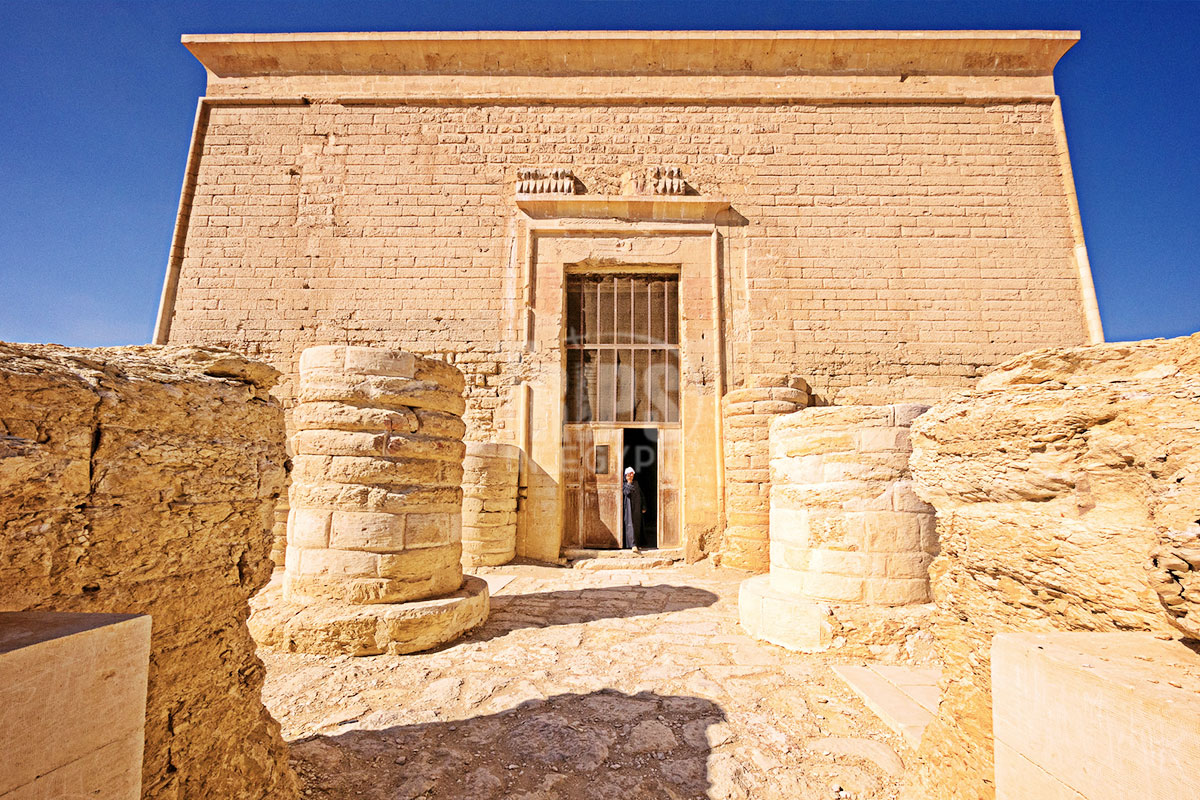
The astral Faiyum oasis was very famous for being the center of the cult of the crocodile god source of the Nile Sobek where many settlements and ancient temples dedicated to the ancient Egyptian deities are the manifestations of powers of nature and all the divinities. All the priests of the god crocodile Sobek had a profound impact on the economical and social life of the ancient Egyptians and were responsible for holding and organizing religious festivals plus purchasing items from all the local producers in the area.
In Roman times, these priests had many privileges which can be seen very clearly across Narmouthis, Bakchias, Tebtunis, Soknopaiou Nesos, and Theadelphia through all the papyri, ostraka, and inscriptions plus detailing many facts about the ancient Egyptian priest's daily life. At the outskirts of the Faiyum oasis are some temples which were operating until the early 3rd and 4th centuries and co-existed with the Christian communities.
2. Bahr Yussef
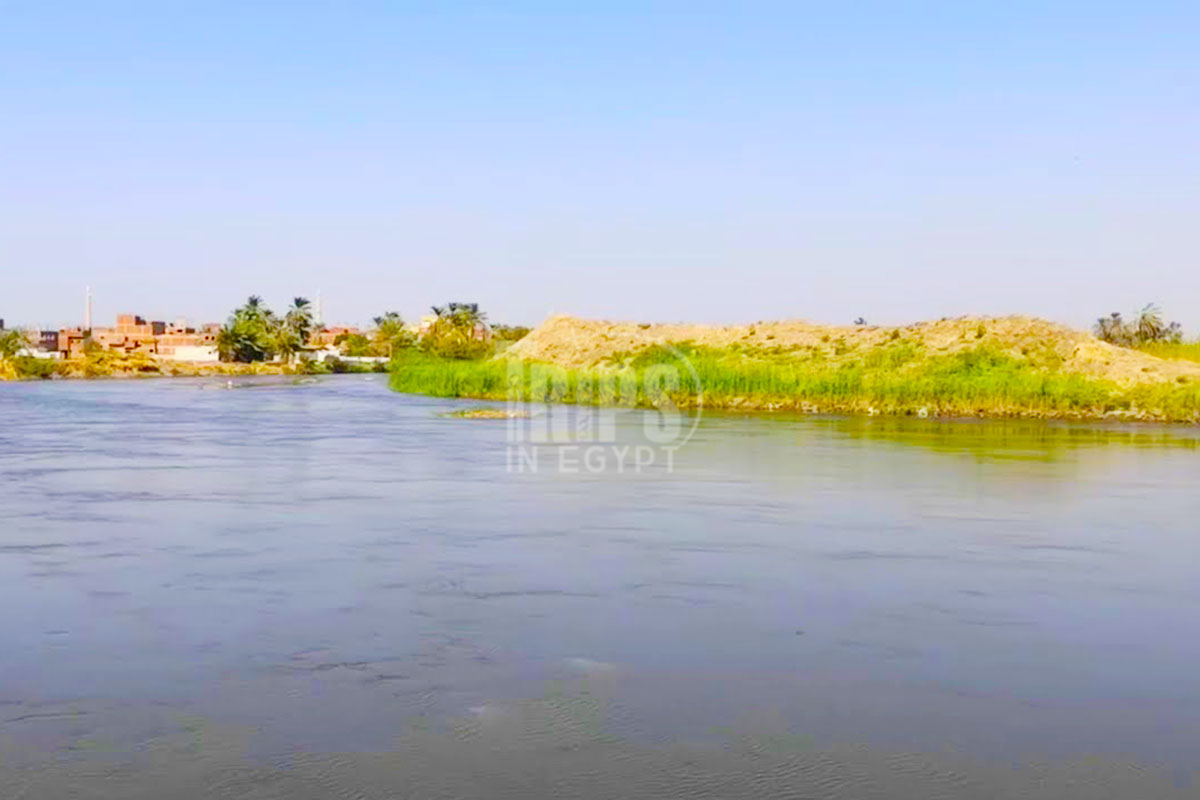
The canal of Bahr Yussef was started by Amenemhat III or his father Senusret III in 2300 BC to regulate the Nile water level during the dry seasons, control the flooding of the Nile River, and have enough water for irrigation. The canal was famous in Biblical times as Joseph’s canal. It was abandoned in 230 BC when the nearest Nile River branch started to get smaller. It has been stated to be an artificial excavation by a number of classic geographers and travelers.
The Bahr Yussef is known to change direction through a very narrow neck of marvelous land between the incredible archaeological attraction of Gurob near Hawara and El Lahun which then branched out in order to create a very rich and blessed agricultural field within the golden Faiyum oasis which then drained in the saltwater of Lake Qarun which is a massive source for fish and tilapia.
All the cultivated lands of Faiyum are made from the fertile Nile mud delivered by Bahr Yussef which is 24 km (15 m) long. There are many canals that irrigate the Fayyum governorate which begins at the start of Bahr Yussef at El Lahun all the way till the end of Faiyum city plus all the drainage water of the annual floods flows in lake Qarun.
3. Monasteries in Faiyum Oasis
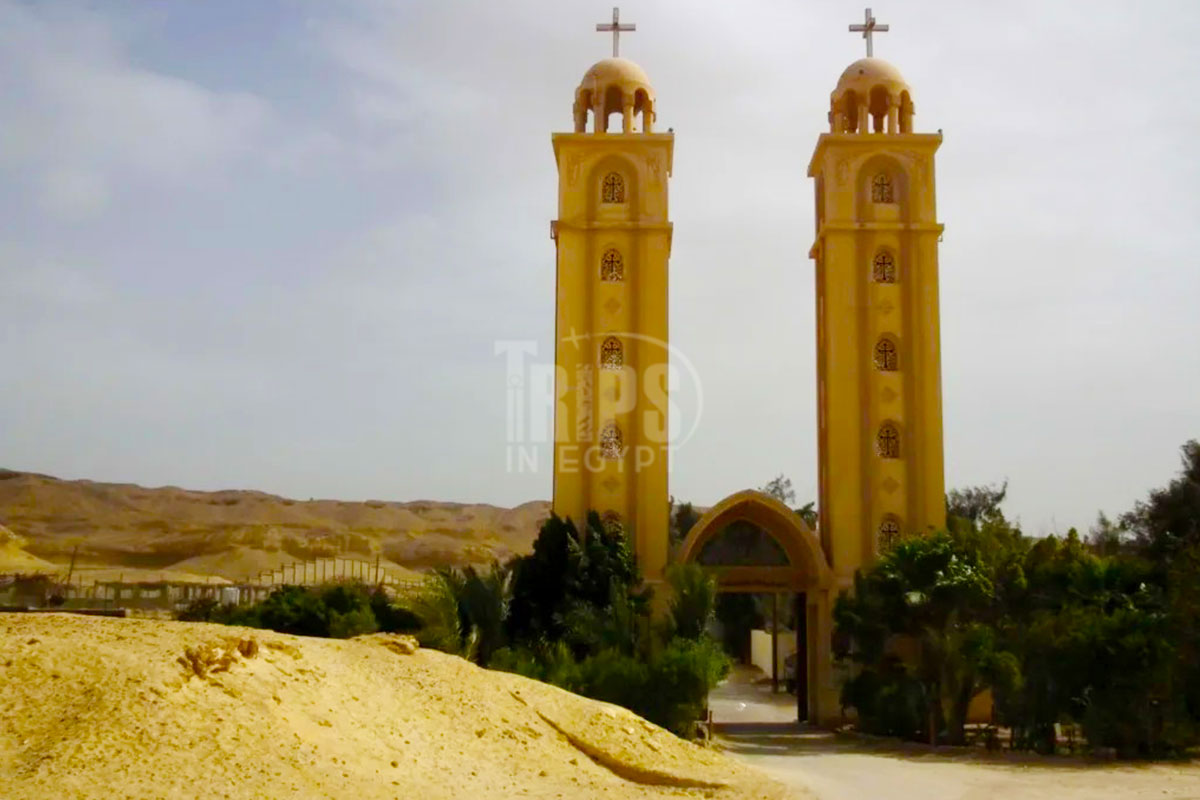
The magical monastery of Saint Anthony (251-356 AD) is one of the most informant monasteries found in this golden country which serves pilgrims and anyone who has specialist interests. On the road to Beni Suef is the marvelous 12th-century Monastery of the virgin "Deir Al Adhra" which is found 6 km outside Faiyum city.
The 7th-century monastery of the angel Gabriel "Deir Malak Ghobrial" is found in the rich cultivated lowlands of the desert. Found 6 km north of the magical attraction of Lahun is the monastery of Deir Hammam which was created in the 6th and 8th centuries. The beautiful Monastery of St George has located 15 km on the southern part of Luhun and offers incredible facts. The enchanting Monastery of St Samuel which is 30 km south of Faiyum oasis will be a very magical sight to behold.
4. Qarun Lake & Tunis Village in Faiyum Oasis
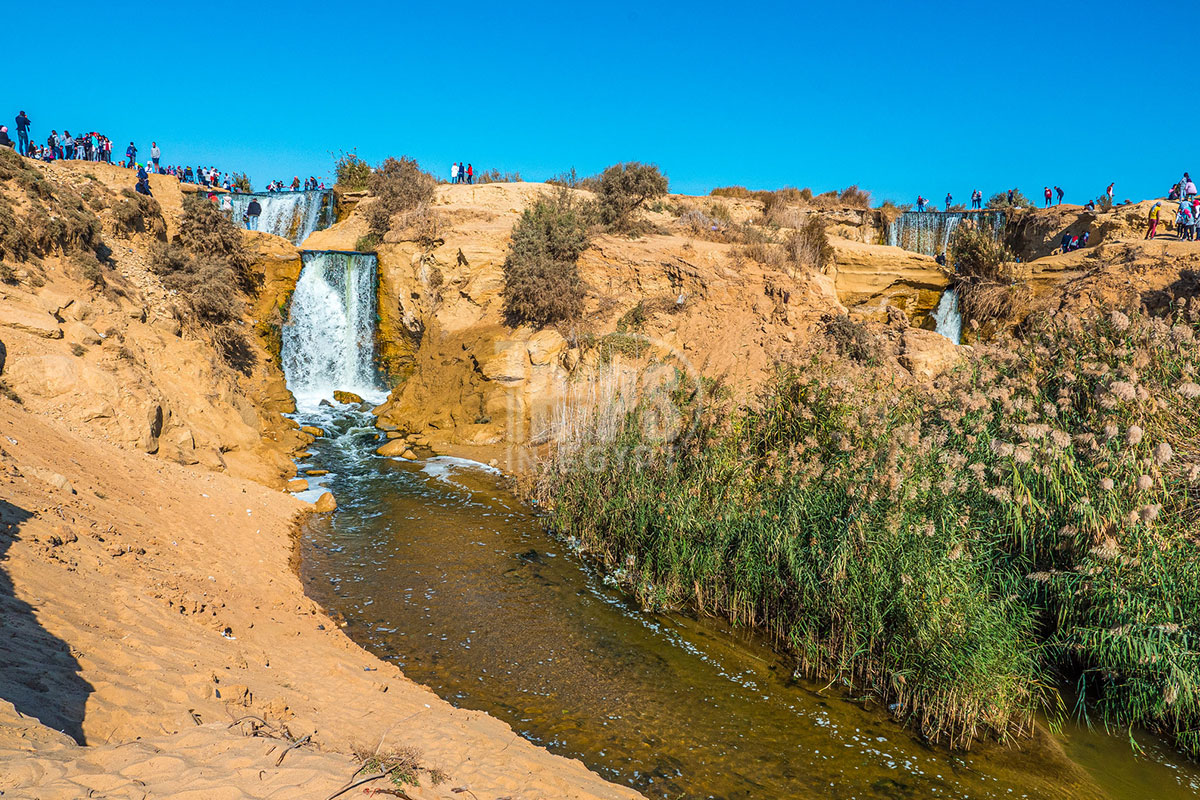
One of the most beautiful places in the Faiyum oasis is the magical Qarun lake which enjoys ideal water level stability due to the Aswan High Dam. It is found 80 km (50 mi) southwest of Cairo, Egypt, and has an area between 1,270 km2 (490 sq mi) and 1,700 km2 (660 sq mi). It is now a protected area that is the source of tilapia and a number of rare fishes. The Qarun Lake was first recorded from about 3000 BC during the reign of Menes (Narmer).
During the middle ages, this legendary lake transformed from a freshwater lake into saltwater with new species. The lake is known to have shrunken to 45 m below the sea level across the last 70,000 years. The ancient Greeks and Romans used to call it Lake Moeris. It is surrounded by a number of houses, fields, and beach resorts that attracts a number of people. It has a massive number of visitors both foreign and domestic as it enjoys a wildlife park, a conservation area with museums filled with monuments & fossils, and efficient infrastructure.
Tunis Village is a modern wonder made in the 60s by Egyptian poets to become a center of art that has many pottery workshops and small art galleries. The village was switched by Swiss potter Evelyn Porret who built a country house in the 1980s Within the village are the Faiyum Art Center and Ibis Cooking School and Restaurant which will provide everyone with the journey of a lifetime.

Things to Do In Faiyum Oasis

There are many things to do in Faiyum oasis which include bird watching in the winter months, and exploring lake Qaroun, and Wadi El Rayan. Have the most entertaining hiking trip across the wonders of Faiyum which are Wadi El-Hitan, Wadi El-Rayan, Petrified Forest, Gabal El-Mudawara, and Dimet El-Sebaa.
Camping at Wadi El Hitan and Gabal El Medawara. Enjoy the most thrilling sand-boarding trip across the incredible and adrenaline-rushing sand dunes such as Qoussour El Arab. Everyone will have the most fun fishing trip on Lake Qaroun.

Conclusion
Faiyum oasis can be explored through one of our magical Egypt travel packages where everyone will cast their eyes on the natural wonders of this magnificent place that stood the test of time. From there, everyone will have the chance to float on the heavenly Nile River on one of our magnificent Nile cruises that will make every moment feel like true magic. Discover this epic destination and make the most of your time in Egypt.
Great vacation for 4 days in Cairo Egypt accompanied by an e...
Duration
4 Days / 3 Nights
Availability
Everyday
An Incredible 5 days Cairo & Alexandria tour package to expl...
Duration
5 Days / 4 Nights
Availability
Everyday
Explore Egypt's ancient wonders on a 6 days vacation to Cair...
Duration
6 Days / 5 Nights
Availability
Everyday
Breathtaking 7 days Cairo, Luxor & Hurghada holiday to explo...
Duration
7 Days / 6 Nights
Availability
Everyday
FAQ
Can you Swim in Faiyum Oasis?
Everyone can have the incredible chance to swim in the magical waters of Faiyum in lake Qaroun and witness all the natural wonders of this blessed place.
What Should I Wear While Being in Egypt?
You should wear whatever you want. It is advised to wear something light from cotton or linen, comfortable and put on sunblock during your time in Egypt in the summer and wear comfortable footwear like a closed-toe shoe to sustain the sandy terrain.
What to Pack for Your Egypt Tour?
You should bring a brimmed hat and sunglasses if you not used to the Egyptian sun &pack everything you could ever need and put in a small bag so you could move easily between your destinations.
Are All Nile Cruises Available at Any Time?
Yes, it is available all years. as the Nile from Aswan to Luxor takes three to four days of sailing on Monday, Wednesday and Friday for the total cost of 600$ and the Nile cruise from Luxor to Aswan take four to five days in Saturday, Monday and Thursday for the coast of 650$.
Why book Trips in Egypt?
We have experience in vacation planning for more than 10 years & our staff consists of the most professional operators, guides and drivers who dedicate all of their time & effort create the perfect vacation. All of our tours are customized by Travel, Financial & Time advisors to fit your every possible need during your time in egypt. we always keep in mind that your safety & comfort are our main priority until you return home.
Is it safe to travel to Egypt?
Yes, it is absolutely safe to travel to egypt, You will feel secure in Egypt as the current atmosphere of the country is very peaceful after the government took powerful measures like restructuring the entire tourist police to include all the important and tourist attractions in Egypt and construct an entire environment dedicated for ensuring the lives of all tourists.
What are Egypt's Visa Requirements?
They are very simples, If you want to apply for a Visa On Arrival that lasts for 30 days then you should be one of the eligible countries(check the link), have a valid passport with at least 6 months remaining and pay 25$ USD entry fee in cash. As for the E-Visa for 30 days, you should have a valid passport for at least 8 months, complete the online application, pay the e-visa fee then print the e-visa to later be presented to the airport border guard. You could be one of the countries eligible for a free visa for 90 days.
What is the Weather is Like?
The temperature of Egypt ranges from 37c to 14 c, Summer in Egypt is somehow hot and winter is cool and mild but sometimes it becomes cold at night. The average of low temperatures vary from 9.5 ¡ÆC in the wintertime to 23 ¡ÆC in the summertime and average high temperatures vary from 17 ¡ÆC in the wintertime to 32 ¡ÆC in the summertime while the temperature is moderate all along the coasts.
What is the Best Time of Visit Egypt?
It is known the best time to travel to Egypt is in the winter from September to April as the climate becomes a bit tropical, a warm atmosphere with a winter breeze. You will also be notified a week before your trip if the weather is unsafe or if any changes have been made.
Should I Give Tips in Egypt?
It is totally up to you, but if you choose to you can tip the servers at your restaurant 5-10% by handing it to them directly and 5 Egyptian Pounds as a general tip of anyone.
Can I Enter the Pyramids?
Yes, you can enter the pyramids for the small fee of 20$.
How to Enjoy Egypt During Ramadan?
Ramadan is a special time of year for Muslims that should be celebrated by non-Muslims and feel the essence of the Islamic culture. You can fast with the Muslim or just observe but you are always welcome to join the celebrations and festivals.

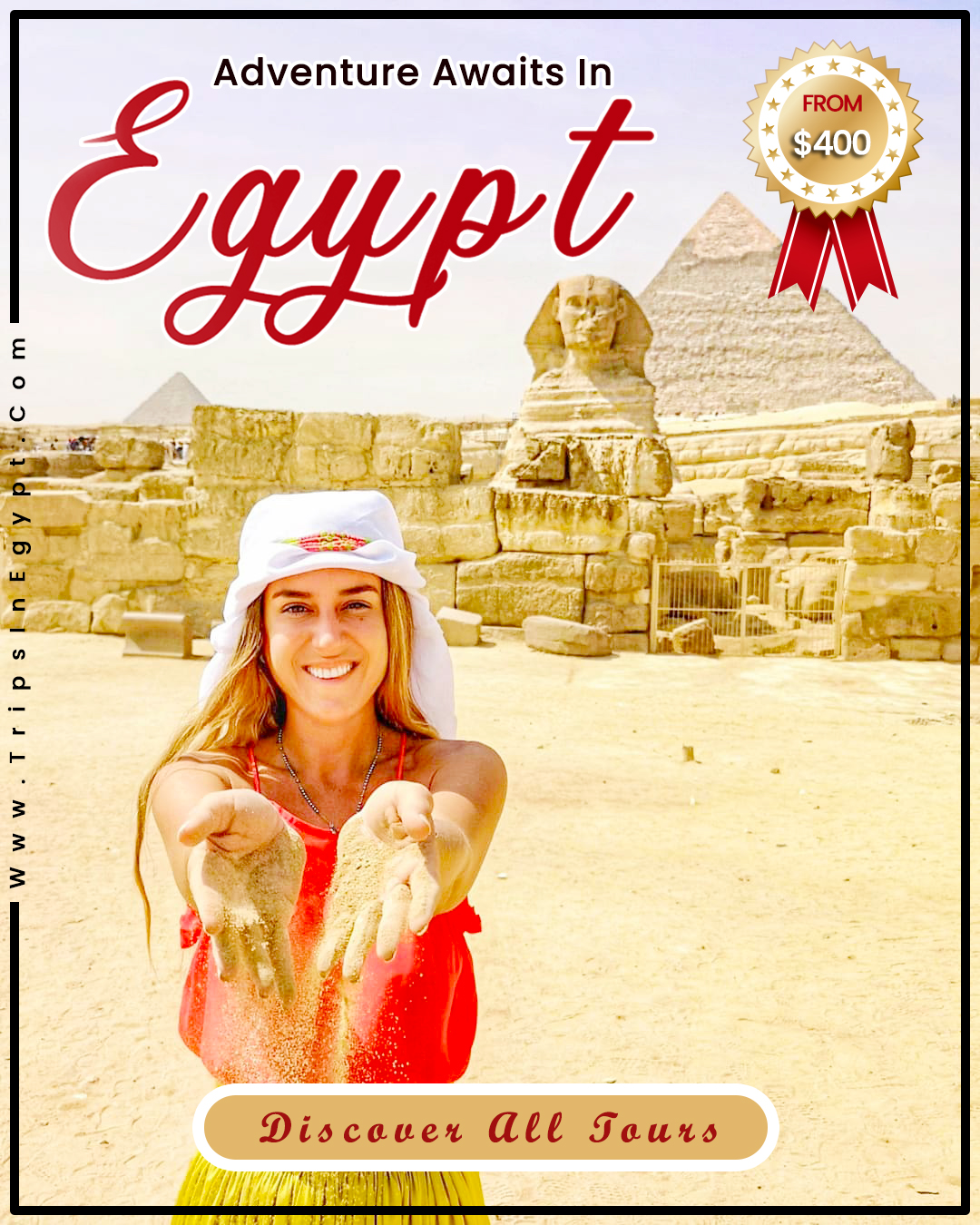
Share Your Comment